Hola una vez más.
Hi again.
Hi again.
En el siguiente enlace podéis ver nuestros próximos viajes fotográficos y de observación de aves y mamíferos nacionales y al extranjero. Espero que os gusten y os animéis a venir conmigo. Una experiencia que nunca olvidareis.
In the following link you can see our next national and foreign Birds and Mammals photographic and observation trips. I hope you like them and I encourage you to come with me. An experience that you will not forget.
En esta ocasión os muestro lo que pude fotografiar en el viaje que hicimos a Gambia del 10 al 16 de noviembre de 2023.
his time I show you what I was able to photograph on the trip we made to the Gambia from November 10 to 16, 2023.
El tiempo fue bueno pero más caluroso de lo que yo creía que haría.
The weather was good but hotter than I thought it would be.
He decidido poneros las fotos de lo que vimos por días de viaje.
I have decided to put the photos of what we saw for days of travel.
I have decided to put the photos of what we saw for days of travel.
Al ser mi tercer viaje a Gambia, no saque tantas fotos como cuando voy por primera vez a un País. En parte debido a que ya tengo muchas fotos de esas mismas especies de los otros viajes. De todos modos so muestro algunas de las fotos que pude sacar en éste.
Being my third trip to The Gambia, I didn't take as many photos as when I go to a country for the first time. Partly because I already have many photos of those same species from the other two trips. Anyway, I'll show you some of the photos I was able to take in this one.
Miércoles 16 de noviembre: Llegamos de Madrid, vía Lisboa muy tarde y nos fuimos a la cama.
Wednesday, November 16: We arrived from Madrid, via Lisbon very late and we went to bed.
Jueves 17 de noviembre: Campos de arroz de Lamin, Reserva Natural de Abuko y Kotu Bridge.
Thursday, November 17: Lamin Rice Fields, Abuko Nature Reserve and Kotu Bridge.
Los campos de arroz de Lamin estaban muy animados con cantidad de aves especies. Había muchos alimoches sombríos (Necrosyrtes monachus) como el de la foto.
The rice fields of Lamin were very lively with many species of birds. There were many Hooded Vulture like the one in the photo.
Avetorillo plomizo (Ixobrychus sturmii).
Dwarf Bittern.
Un adulto y dos jóvenes de ave martillo (Scopus umbretta). El adulto es el de la derecha que tiene el ojo oscuro.
An adult and two young Hamerkop. The adult is the one on the right with the dark eye.
Avefría espinosa (Vanellus spinosus).
Spur-winged Lapwing.
Garcilla cangrejera (Ardeola ralloides).
Squacco Heron.
Abejaruco chico (Merops pusillus).
Little Bee-eater.
Había muchos nenúfares.
There were many Water Lilies.
El primer martín gigante africano (Megaceryle maxima). En este viaje vimos bastantes.
The first African Giant Kingfisher. On this trip we saw quite a lot.
Después nos fuimos hasta la Reserva Natural de Abuko.
Then we went to the Abuko Nature Reserve.
En la foto un colobo rojo occidental (Piliocolobus badius).
In the photo a Western Red Colobus.
Más abundantes eran los cercopitecos verdes (Chlorocebus pygerythrus).
More abundant were the Vervet Monkey.
En una charca había un caimán.
In a pond there was an Alligator.
Un precioso papilio de los cítricos (Papilio demodocus).
A beautiful Old World Swallowtail.
Después del almuerzo, fuimos a un hide bebedero. En la foto un macho de amaranta senegalesa (Lagonosticta senegala).
After lunch, we went to a drinking hide. In the photo a male Red-billed Firefinch.
Bulbul naranjero (Pycnonotus barbatus).
Garden Bulbul.
Capuchino bronceado (Spermestes cucullata).
Bronze Munia.
Acabamos la jornada en Kotu.
We finished the day in Kotu.
En la foto un chorlito gris (Pluvialis squatarola).
In the photo a Gray Plover.
Alcaraván senegalés (Burhinus senegalensis).
Senegal Thick-knee.
Martín pescador pío (Ceryle rudis).
Pied Kingfisher.
Toco piquirrojo occidental (Tockus kempi).
Western Red-billed Hornbill.
Y finalmente, esta tórtola senegalesa (Streptopelia senegalensis).
And finally, thisLaughing Dove.
Un bonito atardecer en Kotu.
A beautiful sunset in Kotu.
Viernes 18 de noviembre: Bosques de Pirang, Farasutu y Marakissa:
Friday, November 18: Pirang, Farasutu and Marakissa forests:
El bosque de Pirang es impresionante.
The Pirang Forest is awesome.
En él, pudimos observar varias especies de aves. La primera que fotografié fue a este autillo cariblanco norteño (Ptilopsis leucotis).
In it, we were able to observe several species of birds. The first one I photographed was this Northern White-faced Owl.
Había un grupo de vinagos africanos comunes (Treron calvus).
There was a flock of African Green-Pigeon.
Este búho lechoso (Bubo lacteus) estaba muy escondido entre las ramos de los árboles y costaba bastante verle.
This Verreaux's Eagle-Owl was hidden among the branches of the trees and it was quite difficult to spot it.
Toco blanquinegro (Lophoceros fasciatus).
African Pied Hornbill.
Aguilucho caricalvo común (Polyboroides typus).
African Harrier-Hawk.
Indicador menor (Indicator minor).
Lesser Honeyguide.
A media mañana nos fuimos hasta el cercano bosque de Farasuto.
At mid-morning we went to the nearby Farasuto Forest.
Abejaruco gorjiblanco (Merops albicollis).
White-throated Bee-eater.
El guía nos llevo hasta donde estaban una pareja de búhos cenicientos (Bubo cinerascens).
The guide took us to where a pair of Vermiculated Eagle-Owl were.
Me hizo gracias este momento. Aunque, si he de ser sincero, hubo muchos como éste.
I was grateful for this moment. Although, if I have to be honest, there were many like this.
Carraca abisinia (Coracias abyssinicus).
Abyssinian Roller.
Cerca de donde estaban los búhos, fuimos a un observatorio con bebederos.
Near where the Owls were, we went to an observatory with drinking pond.
En la imagen una estrilda culinegra (Estrilda troglodytes).
In the image a Black-rumped Waxbill.
Un grupo de abubillas arbóreas negras (Rhinopomastus aterrimus).
A group of Black Scimitar-bill.
Un joven de tejedor africano (Ploceus cucullatus).
Village Weaver juvenile.
Macho de obispo alinegro (Euplectes hordeaceus).
Black-winged Bishop male.
Macho de obispo anaranjado (Euplectes franciscanus).
Northern Red Bishop male.
Macho de azulito carirrojo (Uraeginthus bengalus).
Red-cheeked Cordonbleu male.
Y esta es una hembra.
And this is a female.
Es una pena que no había muchos arbustos en flor y por ello no hice muchas fotos a los suimangas con lo bonitos que son. En la foto un macho de suimanga colilargo (Cinnyris pulchellus).
It's a shame that there weren't many flowering bushes and that's why I didn't take many photos of Sunbirds with how pretty they are. In the photo a male Beautiful Sunbird.
Toco blanquinegro (Lophoceros fasciatus).
African Pied Hornbill.
Almorzamos en la isla del Baobab.
We had lunch on Baobab Island.
Había bastantes panales de abejas.
There were quite a few honeycombs.
And many very large and beautiful baobabs.
Y acto seguido regresamos al observatorio de la mañana en donde pudimos fotografiar otras especies de aves. En la foto un martín pigmeo africano (Ispidina picta).
And immediately afterwards we returned to the morning observatory where we were able to photograph other species of Birds. In the photo an African Pygmy-Kingfisher.
Turdoide pardo (Turdoides plebejus).
Brown Babbler.
Tórtola senegalesa (Streptopelia senegalensis).
Laughing Dove.
Palomita aliazul (Turtur afer).
Blue-spotted Wood-Dove.
Zorzal africano (Turdus pelios).
African Thrush.
Indicador grande (Indicator indicator).
Greater Honeyguide.
Acabamos en día en el Bosque de Marakissa en un restaurante que había bebederos. Como era tarde, ya no venían aves a ellos pero nos dimos un paseo por la zona.
We ended the day in the Marakissa Forest in a restaurant that had drinking fountains. As it was late, Birds were no longer coming to them but we took a walk around the area.
Vimos varios cocodrilos.
We saw several Crocodiles.
Gracias a Dios que ninguno era muy grande.
Thank God none of them were very big.
Alción senegalés (Halcyon senegalensis).
Woodland Kingfisher.
Y lo que más me gusto de todo lo observado fue este martín gigante africano (Megaceryle maxima) macho que se dejó fotografiar muy bien.
And what I liked most of all that was observed was this Giant Kingfisher that allowed itself to be photographed very well.
Son muy grandes. Pueden llegar a medir 46 cm.
They are very big. They can measure 46 cm.
Sábado 19 de noviembre: Humedal de Kartong, bosque de Gunjur Konoto, bosques de
Tujereng y zona costera de Tanji.
Saturday, November 19: Kartong Wetland, Gunjur Konoto Forest, Tujereng Forests and Tanji Coastal Area.
El humedal es muy bonito y está lleno de vida.
The wetland is very beautiful and full of life.
Nada mas llegar al Humedal de Kartong pudimos fotografiar a las carracas blanquiazules (Coracias cyanogaster).
As soon as we arrived at the Kartong Wetland we were able to photograph the Blue-bellied Rollers.
Turaco gris occidental (Crinifer piscator).
Western Grey Plantain-eater.
Encima de unos burros había una pareja de picabueyes piquigualdos (Buphagus africanus).
On top of some donkeys was a pair of Yellow-billed Oxpecker.
Como podéis observar, ya hacia bastante calor a pesar de ser temprano.
As you can see, it was already quite hot despite it being early.
Toco piquirrojo occidental (Tockus kempi).
Western Red-billed Hornbill.
Garceta azabache (Egretta ardesiaca).
Black Heron.
Un ibis sagrado (Threskiornis aethiopicus) llega a un árbol en el que hay posadas garceta grande (Ardea alba), garceta intermedia (Ardea intermedia) y espátula africana (Platalea alba).
A Sacred Ibis arrives at a tree perched on by Western Great Egret, Intermediate Egret and African Spoonbill.
Águila pescadora (Pandion haliaetus).
Osprey.
Bubú coronigualdo (Laniarius barbarus).
Common Gonolek.
Había muchos suirirí cariblanco (Dendrocygna viduata).
There were many White-faced Whistling-Ducks.
Este estaba más cerca.
This one was closer.
Espátula africana (Platalea alba).
African Spoonbill.
En esta foto se puede apreciar muy bien la diferencia de tamaño entre la garceta grande (Ardea alba) y la garceta intermedia (Ardea intermedia).
In this photo you can clearly see the difference in size between the Western Great Egret and the Intermediate Egret.
Jacana africana (Actophilornis africanus).
African Jacana.
Calamón africano (Porphyrio madagascariensis).
African Swamphen.
Cormorán africano (Microcarbo africanus).
Long-tailed Cormorant.
Anhinga africana (Anhinga rufa).
African Darter.
Martín pescador malaquita (Corythornis cristatus).
Malachite Kingfisher.
Abejaruco persa (Merops persicus). Adulto a la izquierda, joven a la derecha.
Blue-cheeked Bee-eater. Adult on the left, juvenile on the right.
Joven.
Juvenile.
Estrilda culinegra (Estrilda troglodytes).
Black-rumped Waxbill.
Crombec norteño (Sylvietta brachyura).
Northern Crombec.
Estornino orejuazul (Lamprotornis chalybaeus).
Greater Blue-eared Glossy-Starling.
El humedal desemboca en el oceano en una bonita playa. Algunos incluso se dieron un baño en ella.
The wetland flows into the ocean on a beautiful beach. Some even took a bath in it.
Pelicano rosado (Pelecanus rufescens).
Pink-backed Pelican.
Zarapito trinador (Numenius phaeopus).
Whimbrel.
Chorlitejo frentiblanco (Charadrius marginatus).
White-fronted Plover.
Garceta dimorfa (Egretta gularis).
Western Reef-Egret.
Después del almuerzo visitamos un hide bebedero en el Bosque de Gunjur Konoto. Estas tres especies fueron las que más me llamaron la atención.
After lunch we visited a drinking hide in the Gunjur Konoto Forest. These three species were the ones that caught my attention the most.
Martín pigmeo africano (Ispidina picta).
African Pygmy-Kingfisher.
Un macho de monarca ventrirrojo (Terpsiphone rufiventer).
Black-headed Paradise-Flycatcher.
Y una tórtola ojirroja (Streptopelia semitorquata).
And a Red-eyed Dove.
Y acto seguido fuimos a dar un paseo por el Bosque de Tujereng.
And then we went for a walk through the Tujereng Forest.
Había muchos escarabajos como este. Pertenecen al género Hycleus.
There were many beetles like this. They belong to the genus of Blister Beetle.
Prinia alirroja (Prinia erythroptera).
Red-winged Warbler.
Tejedor gorrión coronicastaño (Plocepasser superciliosus).
Chestnut-crowned Sparrow-Weaver.
Y al atardecer llegamos hasta la zona costera de Tanji, donde hay un mercado de pescado muy grande.
And at sunset we arrived at the coastal area of Tanji, where there is a very large fish market.
Había muchas gaviotas cabecigrís (Chroicocephalus cirrocephalus).
There were many Grey-headed Gull.
Pagaza piquiroja (Hydroprogne caspia).
Caspian Tern.
Y charrán real africano (Thalasseus albididorsalis).
West African Crested Tern.
Domingo 20 de noviembre: De Bijilo al campamento de Tendaba. En este día hicimos varias paradas en el camino.
Sunday, November 20: From Bijilo to Tendaba Camp. On this day we made several stops along the way.
Avefría senegalesa (Vanellus senegallus).
Wattled Lapwing.
Águila crestilarga (Lophaetus occipitalis).
Long-crested Eagle.
Garcilla azulada (Butorides striata).
Striated Heron.
Cucal senegalés (Centropus senegalensis).
Senegal Coucal.
Tejedor chico (Ploceus luteolus).
Little Weaver.
Espátula africana (Platalea alba).
African Spoonbill.
Golondrina colilarga (Hirundo smithii).
Wire-tailed Swallow.
Cogujada común (Galerida cristata).
Crested Lark.
Garceta dimorfa (Egretta gularis).
Western Reef-Egret.
Luego fuimos a otros dos hide bebedero el primero no estaba muy concurrido. El segundo bastante mejor. En la foto una estrilde carinaranja (Estrilda melpoda).
Then we went to another two hide watering hole he first one wasn't very busy. The second much better. In the photo an Orange-cheeked Waxbill.
Tejedor anaranjado (Euplectes franciscanus).
Northern Red Bishop.
Un macho de la especie anterior que ya estaba casi con todo su plumaje no reproductor.
A male of the previous species that was already in almost all of its non-breeding plumage.
Y este es un juvenil de la misma especie.
And this is a juvenile of the same species.
Esta mariposa llamó mi atención.
This Butterfly caught my eye.
.
Palomita saheliana (Turtur abyssinicus).
Black-billed Wood-Dove.
Un bonito macho de azulito carirrojo (Uraeginthus bengalus).
A nice Red-cheeked Cordonbleu male.
Macho de serín frentiamarillo (Crithagra mozambica).
Yellow-fronted Canary.
Nos detuvimos a almorzar en un bonito hotel a orillas del río Gambia.
We stopped for lunch at a nice hotel on the banks of the Gambia River.
Continuamos nuestro viaje hasta el campamento de Tendaba. en el camino hicimos una parada al ver a este alción cabeciblanco (Halcyon leucocephala).
We continue our trip to Tendaba Camp. On the way we made a stop when we spot this Grey-headed Kingfisher.
Gavilán chikra (Accipiter badius).
Shikra.
Carraca abisinia (Coracias abyssinicus).
Abyssinian Roller.
Como teníamos tiempo, cerca del campamento dimos un paseo por la zona.
Since we had time, near the camp we took a walk around the area.
En la foto un drongo satinado (Dicrurus divaricatus).
In the photo a Glossy-backed Drongo.
Estrilda degollada (Amadina fasciata).
Cut-throat.
Había muchos estorninos en los campos de cacahuetes.
There were many starlings in the peanut fields.
Este es un estornino purpúreo (Lamprotornis purpureus).
This is a Purple Glossy-Starling.
Y este otro un estornino colilargo (Lamprotornis caudatus).
And this one a Long-tailed Glossy-Starling.
Pito gris occidental (Chloropicus goertae).
Grey Woodpecker.
Grey Kestrel.
Y carraca abisinia (Coracias abyssinicus).
And Abyssinian Roller.
Lunes 21 de noviembre: Paseo en barco por los meandros de Tunku y Kissi Bolong y Parque Nacional Kiang West.
Monday, November 21: Boat trip through the Tunku and Kissi Bolong meanders - Kiang West National Park.
Los hoteles en el interior del país son mu básicos pero no hay nada mejor. La comida es aceptable. En la foto una parte del Tendaba Camp.
Hotels in the interior of the Country are very basic but there is nothing better. The food is acceptable. In the photo a part of the Tendaba Camp.
Por la mañana temprano salimos en barca a los meandros de Tunku y Kissi Bolong.
Early in the morning we leave by boat to the meanders of Tunku and Kissi Bolong.
Ya en el interior de los meandros pudimos fotografiar bastante especies de aves. En la foto una anhinga africana (Anhinga rufa).
Already inside the meanders we were able to photograph many Bird species. In the photo an African Darter.
Pelícano rosado (Pelecanus rufescens).
Pink-backed Pelican.
Abejaruco gorjiblanco (Merops albicollis).
White-throated Bee-eater.
Abejaruco europeo (Merops apiaster).
European Bee-eater.
Garceta dimorfa (Egretta gularis).
Western Reef-Egret.
Andarríos chico (Actitis hypoleucos).
Common Sandpiper.
Garceta intermedia (Ardea intermedia).
Intermediate Egret.
Alción pechiazul (Halcyon malimbica).
Blue-breasted Kingfisher.
Cigüeña lanuda asiática(Ciconia episcopus).
Woolly-necked Stork.
Garcilla cangrejera (Ardeola ralloides).
Squacco Heron.
Avemartillo (Scopus umbretta).
Hamerkop.
Zarapito trinador (Numenius phaeopus).
Whimbrel.
Garza real (Ardea cinerea).
Grey Heron.
En uno de los meandros había un colonia de cría de cormoranes grandes cuelliblancos (Phalacrocorax lucidus). Hay división de opiniones si se le debe considerar una subespecie del cormorán grande o una especie en si misma. Yo le he recogido como si fuese una especie distinta de los que vemos en España al ver que hay bastante diferencia con los nuestros.
In one of the meanders there was a breeding colony of White-breasted Cormorant. There is a division of opinion whether it should be considered a subspecies of the great cormorant or a species in itself. I have collected it as if it were a different species from those we see in Spain, seeing that there is quite a difference with ours.
Ibis sagrado (Threskiornis aethiopicus).
Sacred Ibis.
Después nos fuimos a un bebedero hide cercano al Camp.
Afterwards we went to a watering hole hide near the Camp.
Este barbudo pechirrojo (Lybius dubius) estaba al comienzo de la subida al hide.
This Bearded Barbet was at the beginning of the climb to the hide.
Ya en el hide, había bastantes especies. En la foto un bulbul naranjero (Pycnonotus barbatus).
Already in the hide, there were quite a few species. In the photo an Garden Bulbul.
Gorrión chico (Gymnoris dentata).
Bush Petronia.
Gorrión gris (Passer griseus).
Grey-headed Sparrow.
Serín frentiamarillo (Crithagra mozambica) macho.
Yellow-fronted Canary male.
Macho de tejedor vitelino (Ploceus vitellinus).
Vitelline Masked-Weaver male.
Estrilda culinegra (Estrilda troglodytes).
Black-rumped Waxbill.
Hembra de azulito carirrojo (Uraeginthus bengalus).
Red-cheeked Cordonbleu female.
Palomita saheliana (Turtur abyssinicus).
Black-billed Wood-Dove.
Y estrilda azulada (Glaucestrilda caerulescens).
And Lavender Waxbill.
Cuando íbamos al campamento para almorzar vimos una manada de babuinos.
When we were going to camp for lunch we saw a troop of Baboons.
Y a esta tórtola senegalesa (Streptopelia senegalensis).
An this Laughing Dove.
Por la tarde dimos un paseo por el Parque Nacional Kiang West para seguir sumando especies en la lista.
In the afternoon we took a walk through Kiang West National Park to continue adding species to the list.
Macho de amaranta senegalesa (Lagonosticta senegala).
Red-billed Firefinch male.
Macho de estrilda degollada (Amadina fasciata).
Cut-throat.
Macho de toco piquinegro (Lophoceros nasutus).
African Grey Hornbill.
Macho de carbonero guineano (Melaniparus guineensis).
White-shouldered Tit male.
Y por último una pareja de alción estriado (Halcyon chelicuti).
And finally a pair of Striped Kingfisher.
Si queréis suscribiros a este blog de los viajes que hacemos pincha en el siguiente enlace: Suscribirse y haz clic en ¿ Quieres suscribirte a nuestro blog?
If you want to subscribe to this post about the trips we do, click on the following link: Susbcribe and click on: Do you want to subscribe to our blog?
Espero que os haya gustado y hasta pronto.
I hope you like it and see you soon.























.jpg)


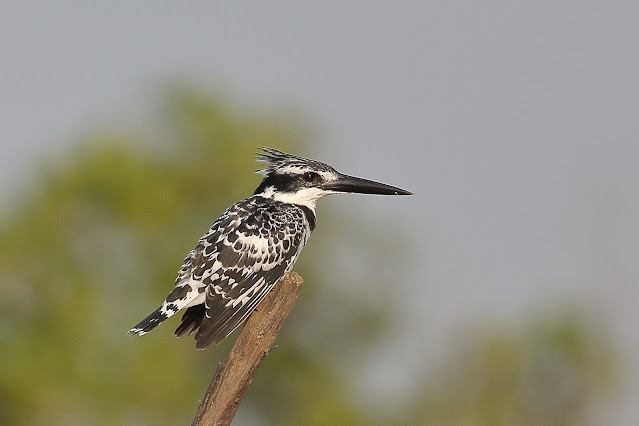

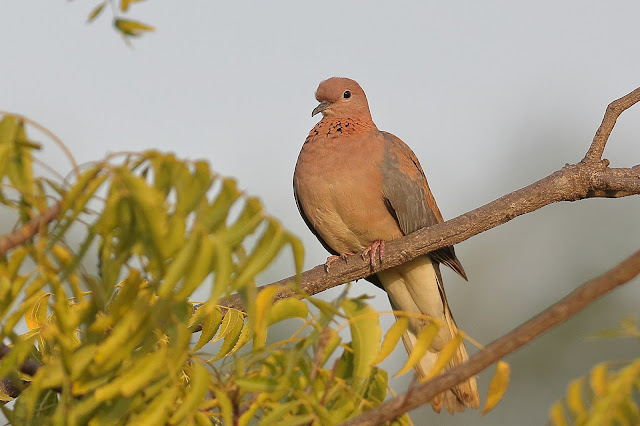


.jpg)


















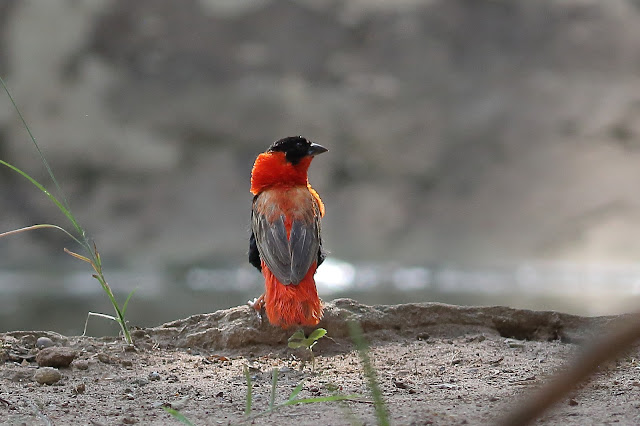




























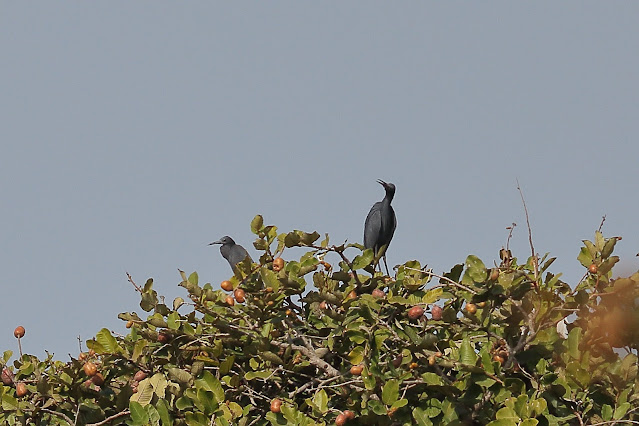



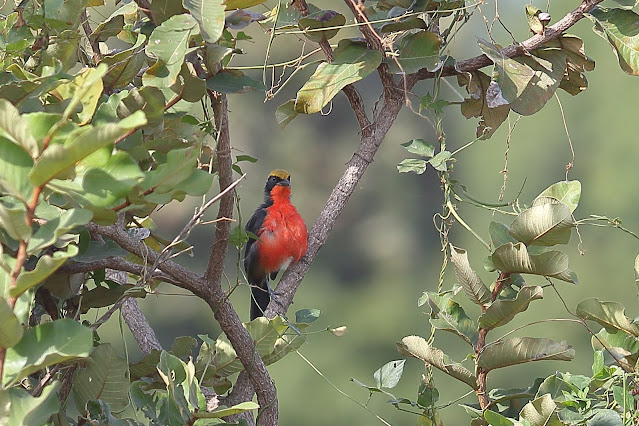








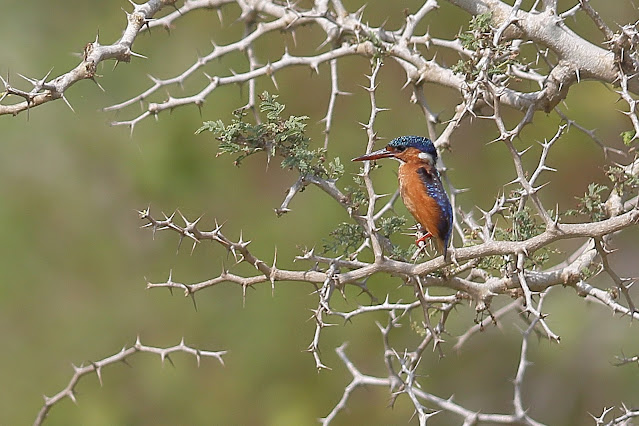





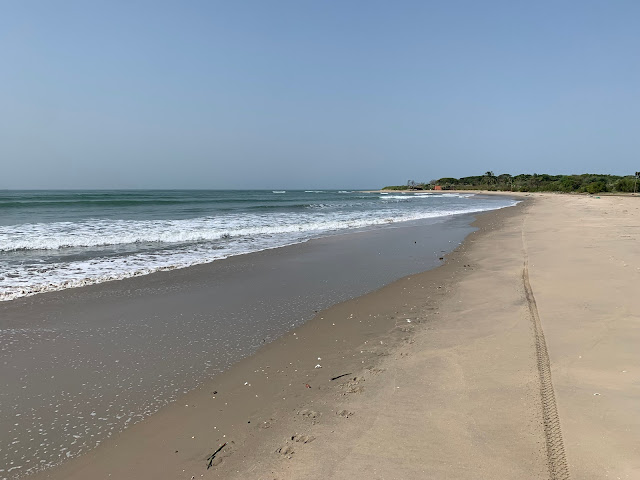
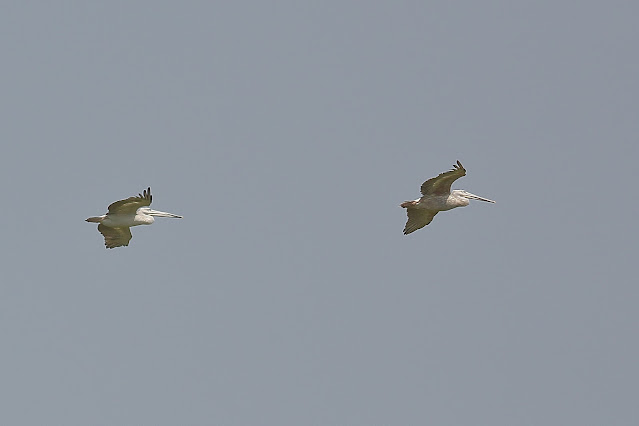



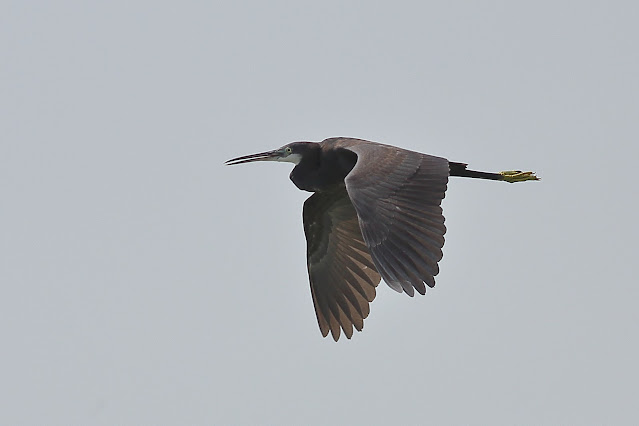



















































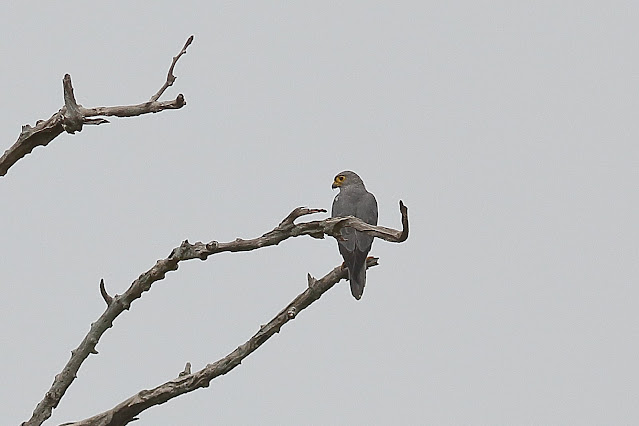



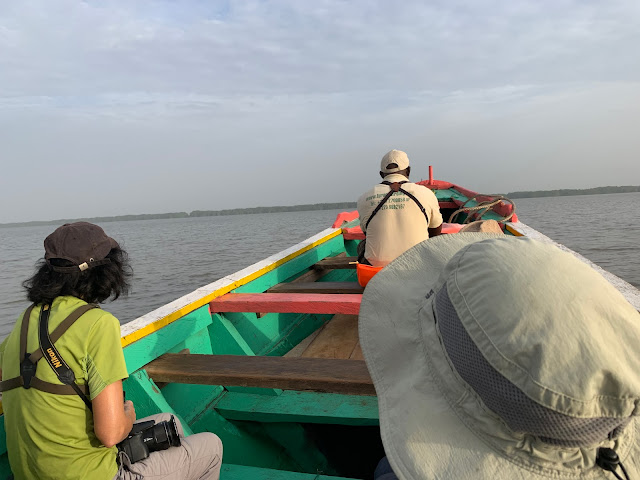














































Qué buenos recuerdos y qué buenas fotos!! Maravilloso viaje y maravillosa compañía. Me ha encantado revivirlo con el blog. Elena.
ResponderEliminarMuchas gracias Elena,
EliminarMe alegro que te haya gustado y hecho revivir parte del viaje.
Un abrazo,
Luis
Recuerdo perfectamente tu segundo viaje a Gambia, en el que asistí, y aquello es un Eden precioso y muy recomendable, y co0mo siempre con inmejorables compañereros
ResponderEliminarCon este Blog lo revivimos.
Muchas gracias Antón.
EliminarUn abrazo,
Luis
Buena colección la que has pillado. Yo estoy recién llegado de un viaje muy parecido y ando colgando las especies en mi blog. Algunas aves han cambiado su nombre en los últimos años porque han aparecido como especies nuevas. No es la garceta dimorfa sino la garceta costera occidental ni tampoco la gaceta intermedia, que es asiática, esta se llama piquicorta. Saludos.
ResponderEliminar